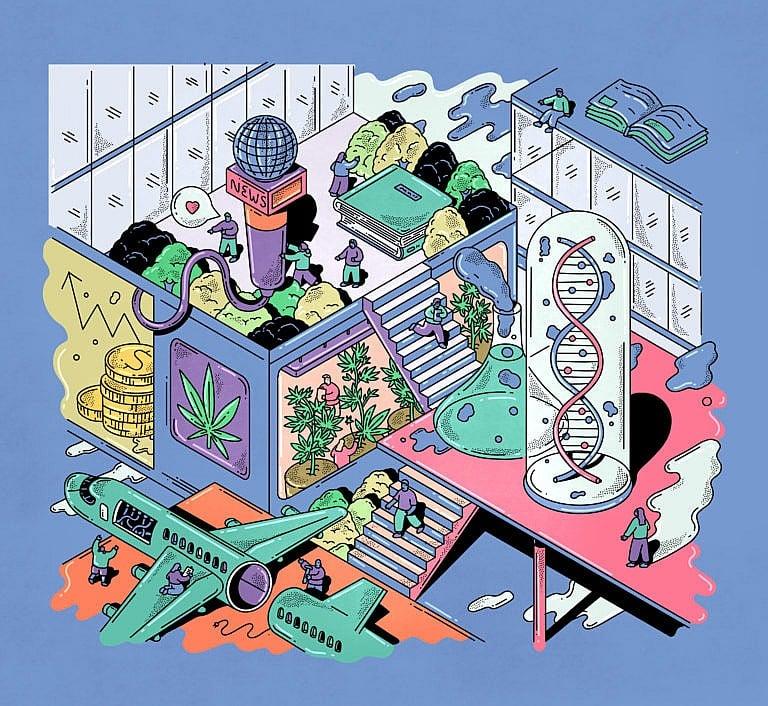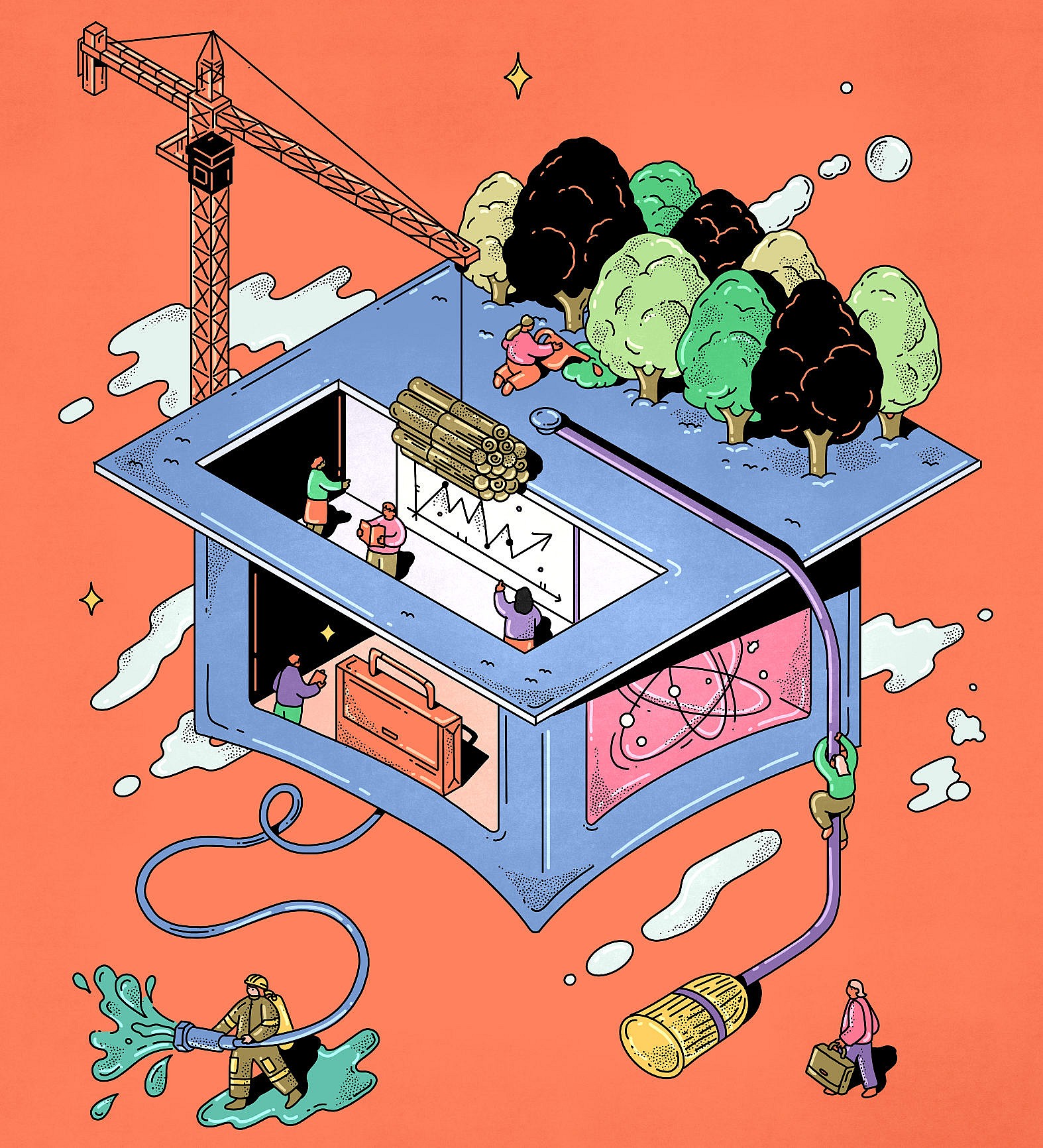Everything you need to know about colleges in Canada
Answers to all of the pressing who, why, what, where and when questions.

Share
From the types of credentials you can earn to cost, here are the answers to your college-related questions.
What is the difference between college and university?
Colleges and universities both offer valuable educational experiences and provide the skills and credentials students need to get jobs. Colleges tend to emphasize work-oriented learning, with plenty of hands-on training through labs, co-ops, internships and job placements. Some programs are developed in partnership with employers, who keep schools informed about the kinds of skills they’re looking for in workers. College students tend to get into the workforce quickly; a diploma program generally takes two years to complete. Universities, meanwhile, offer academic and professional programs, which usually entail more theoretical learning, and an undergraduate degree typically takes four years to complete. Some of these lines are blurring. Many colleges now offer degree programs, and many universities offer work-integrated learning opportunities.
College class sizes tend to be smaller than those in university, ensuring students have ample access to instructors and the opportunity to learn employable skills. This emphasis on employable skills is part of the reason there’s such a wide variety of programs to choose from at colleges. “There isn’t a field that we don’t cover,” says Denise Amyot, president and CEO of Colleges and Institutes Canada (CICan), which represents more than 100 publicly funded colleges, institutes and polytechnics across the country. (There are many private colleges that aren’t members of CICan.)
What’s the difference between a college, institute, CEGEP and polytechnic?
Very little. Colleges, institutes and polytechnics are basically the same thing. In the past, polytechnics and institutes were more focused on applied technical education while colleges were more broadly focused on serving their communities, providing students with vocational training or a bridge to university. But the lines are blurring here, too. Colleges, institutes and polytechnics all conduct research, regardless of size. Both College of the Rockies in Cranbrook, British Columbia, which has a full-time student body of about 2,100 people, and Toronto’s Humber College, which has about 33,000 people enrolled, offer students the opportunity to participate in applied research projects.
A CEGEP, which stands for Collège d’enseignement général et professionnel, is a little different. These schools are exclusive to Quebec, and they offer both pre-university courses (these are two-year programs; attendance is compulsory for anyone who wants to attend university) and technical programs, which take three years to complete and are focused on skills training.
Who goes to Canadian colleges?
Many college students come straight from high school and pursue a degree or diploma that will lead to a first job or career. Others have years of work experience and are looking to upskill (gain additional education or training for the job they’re already doing) or reskill (learn new skills so they can change jobs or even industries).
The average age of a college student in Canada is 27, says Amyot, but many are older. “You may have colleagues who are 40, training for their second or third career,” Amyot says.
University graduates who are struggling to find work often opt for short, applied college programs to make themselves more attractive to hiring managers. (Think English majors who opt to go back to school for a diploma in public relations, or engineering grads who earn a certificate in software quality assurance.) Amyot says 47 per cent of college students have attended a post-secondary institution of some sort in the past, and 34 per cent have already earned a post-secondary credential.
What kind of credentials can you earn at Canadian colleges?
Certificates
Most certificate programs in Canada focus on entry-level vocational training and run for up to one year, or two semesters, of study, though the actual length of schooling may vary by program. Students can earn certificates in dozens of specializations—cannabis cultivation, heavy equipment operation, plumbing, office administration, firefighter education and training, urban forestry, and carpentry, to name a handful. Some schools differentiate between types of certificates; at Nova Scotia Community College, for example, “college certificates” require more than 360 but fewer than 720 instructional hours, and cover more junior roles; “certificates” require at least 720 instructional hours.
There is another type of certificate on offer at colleges, institutes and polytechnics: the graduate certificate. This is aimed at students who already have a post-secondary credential and, in some cases, work experience. These programs are intended to build expertise and skills in a particular area, and usually require two to three semesters of study. For example, Saskatchewan Polytechnic offers a graduate certificate in cloud computing and blockchain, while PEI’s Holland College offers one in advanced care paramedicine. Some also offer work placements as part of the program.
Diplomas
Diploma programs prepare students for roles in a range of technical, administrative and professional occupations. You can get a diploma in aircraft maintenance, animation, video game development, accounting, nursing, public relations and social work. These programs require two or three years of full-time study, depending on the program and province. Students in three-year programs earn an advanced diploma, which prepares them for technical or management roles in fields as varied as biotechnology, computer engineering, business administration, aerospace manufacturing and journalism.

Undergraduate degrees
You don’t have to go to university to earn a bachelor’s degree; 98 colleges, institutes and polytechnics across Canada are authorized to grant B.A.s or other bachelor degrees in programs that include art history, criminology, economics and supply chain management, among many others. These programs require four years of full-time study.
These are different from partnership programs between a college, institute or polytechnic and a university, which are becoming increasingly common. For example, students enrolled in a joint program at Red River College and the University of Winnipeg earn both a bachelor of business administration (from UWinnipeg) and a business administration diploma (from RRC).
Graduate degrees
A handful of Canadian colleges and institutes offer master’s degrees. Great Plains College in Swift Current, Saskatchewan, for example, has a master of business administration degree in community economic development for students who already have a B.A. It’s a part-time program with instruction taking place on alternate weekends, and it is aimed at people aspiring to hold leadership roles in strategic leadership, First Nations economic development or public policy.
There are also several joint master’s programs offered by Canadian colleges and universities, including an online-only nurse practitioner program that is a collaboration between Saskatchewan Polytechnic and the University of Regina. Another example: Canada’s first master’s program in ecological restoration, offered by the British Columbia Institute of Technology and Simon Fraser University.
Microcredentials
These short, concentrated programs aren’t based on a set number of instructional hours; instead, a student earns them by demonstrating competency in particular skills, and they are often designed for professionals who want to upskill or reskill. At Conestoga College, students can earn a home staging microcredential by taking three asynchronous online courses: Introduction to Interior Decorating; History of Furniture and Accessories; and Floor Plans, Space Planning and Presentations. Students are required to complete online assignments and tests, but there’s no final exam and no group work. Meanwhile, the Introduction to Project Management microcredential at Assiniboine College, while also asynchronous and online, is broken into four units—an overview of project management, a guide to tools and templates, creating projects, and building status reports—and requires the completion of a quiz for each unit and participation in discussion groups.
How much does it cost to study at college?
Tuition costs vary by province and type of credential. In the Nova Scotia Community College system, certificate and diploma programs start at $3,820 per year, while post-graduate programs start at $5,750. Diploma programs in Ontario cost an average of $2,400 per academic year; it’s $3,600 for graduate certificates, $6,100 for bachelor degrees and $5,000 for collaborative programs. In B.C., college tuition costs an average of $3,216, while at institutes, it’s $3,765 and at universities, it’s $5,770.
What is the benefit of doing a B.A. at a college?
Because colleges and universities have different focuses, the nature of what students learn can differ quite a bit, too. Colleges are hyper-focused on the needs of employers. In fact, one major reason colleges got into degree-granting in the first place is that companies told CICan they needed workers with hands-on experience and more extensive training. For example, the honours bachelor of technology management program at George Brown College was developed at the request of a construction company that had a shortage of managers in construction.
Students who earn degrees at colleges are also exposed to applied research, which is principally concerned with solving real-world problems. For example, researchers at the College of the North Atlantic in Newfoundland and Labrador established the Wave Energy Research Centre to study how wave energy could be used to pump sea water inland for use in aquaculture. And at Manitoba’s Red River College, researchers worked with Mitsubishi and Manitoba Hydro to develop an all-electric, zero-emission bus and charger system that could handle harsh winter weather; in 2014, Winnipeg Transit added four of these buses to its fleet.
For some students, the most compelling reason to earn a bachelor’s degree at a college rather than at a university is accessibility. Ninety-five per cent of Canadians and 86 per cent of Indigenous people live within 50 kilometres of a college, an institute or a polytechnic, which makes it much easier to attend one after secondary school.